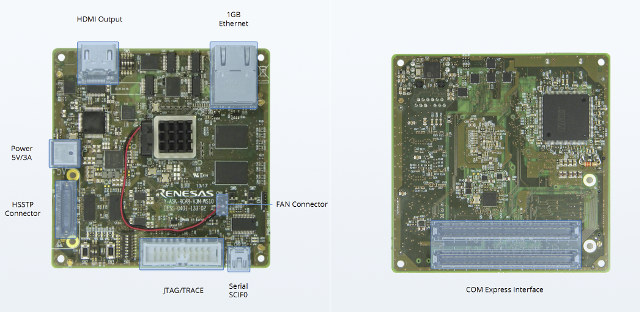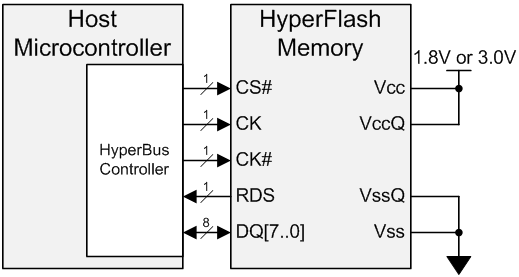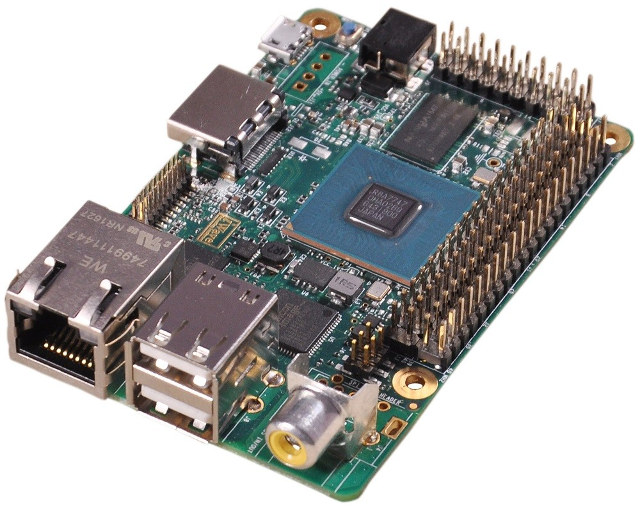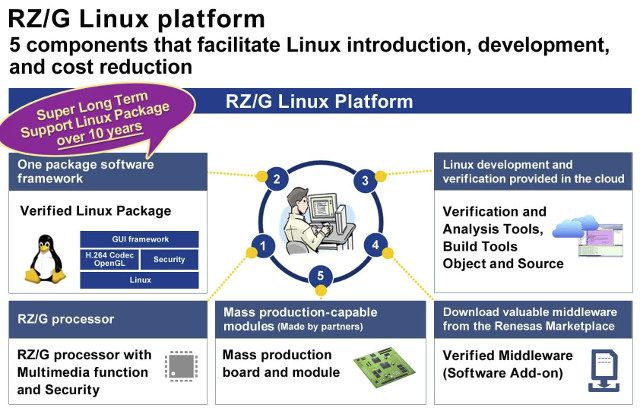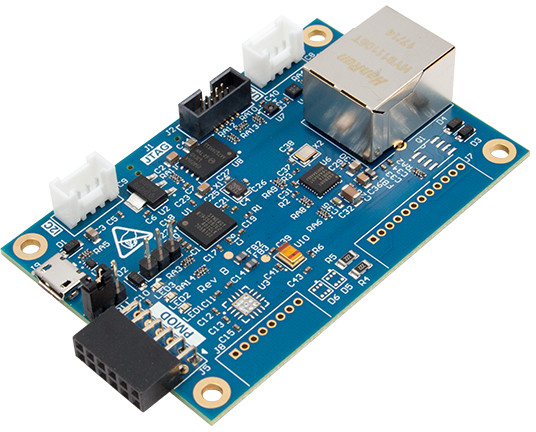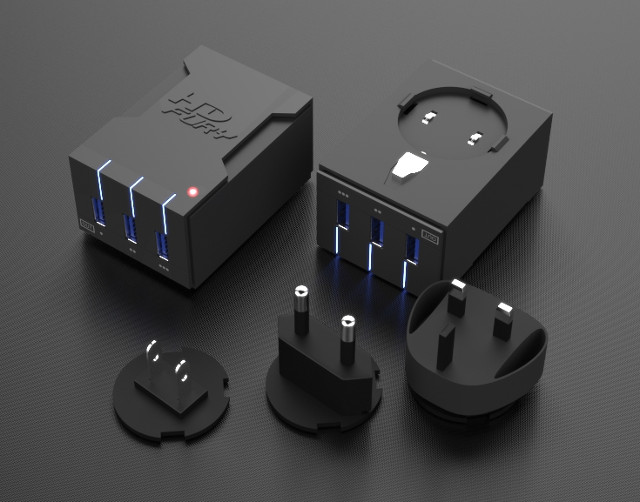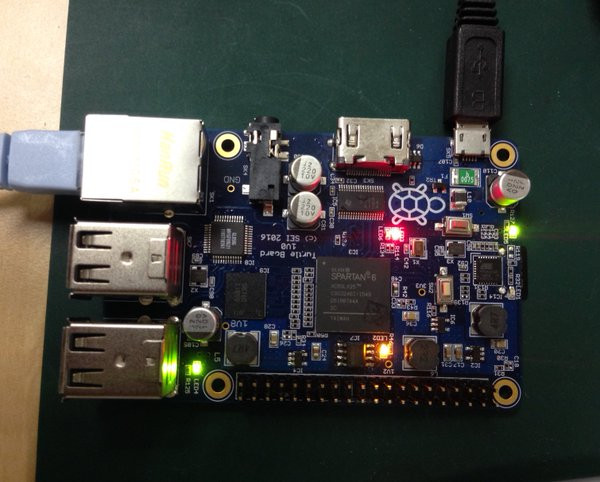Most boards targeting the automotive market are impossible to purchase by individual, so last year I was pleasantly surprised when I discovered Renesas R-Car M2 Porter Linux automotive infotainment development board was available for sale on Digikey, and had good documentation on eLinux.org. The company has now introduced another automotive board, namely R-Car V3M starter kit, that’s not designed for infotainment, but instead for ADAS (Advanced Driver Assistance Systems) or even AD (Automated Driving) applications. Specifically, the board is supposed to “accelerate the development of New Car Assessment program (NCAP), front camera applications, surround view systems, and lidars” leveraging the company’s R-Car V3M image recognition SoC. Renesas R-Car V3M starter kit (V3MSK) specifications: SoC – Renesas R-Car V3M processor with two Cortex A53 64-bit cores @ up to 800 MHz, a dual lockstep Cortex-R7 32-bit core @ up to 800 MHz, IMP-X5-V3M image recognition engine System Memory – 448KB RAM on-chip; […]
Octo SPI / HyperBus Interface is Designed for High Speed Serial Flash, RAM, and MCP
So far, if you needed high speed storage with low pin count in your MCU based board, you could use QSPI (Quad SPI) NOR flash, but earlier this month I wrote about STM32L4+ MCU family, which added two Octo SPI interfaces. I had never heard about Octo SPI previously. Those two interfaces can be used with single, dual, quad, or octal SPI compatible serial flash or RAM, and support a frequency of up to 86 MHz for Octal SPI memories in STM32L4+ MCU. STMicro OctoSPI interface also supports Cypress/Spansion Hyperbus mode to connect to HyperFlash or HyperRAM chip, or even HyperFlash + HyperRAM Multi-Chip packages (MCP), and variable or fixed external memory latency as defined by the Hyperbus protocol specification. The latter reveals Hyperbus supports performance up to 400 MB/s (provided the controller support 200 MHz), and relies on either 11 bus signals using 3.0V I/O (Single-ended clock CK), or […]
Compact Renesas RZ/G1C based ARM Linux Single Board Computer Exposes 100 Expansion Pins
iWave Systems has released a new business card sized single board computer (SBC) with iW-RainboW-G23S, which looks somewhat similar to a Raspberry Pi 3 board, but is equipped with Renesas RZ/G1C single or dual core ARM Cortex A7 processor, up to 2GB RAM, Gigabit Ethernet, and provides plenty of I/Os through 3 headers for a total of 100 pins. Target applications include HMI & access control, industrial control, healthcare devices, point of sale, IoT, home & office automation, and white goods & appliances. iW-RainboW-G23S board specifications: SoC – Renesas RZ/G1C Dual/Solo ARM Cortex-A7 processor @ 1.0 GHz with PowerVR SGX531 3D GPU System Memory – 512 MB DDR3 (expandable up to 2GB) Storage – 2MB SPI Flash (expandable), 8GB eMMC Flash (expandable), and micro SD connector Video Output/Input – 1x HDMI output port, 1x CVBS input RCA jack, optional 1x CVBS output RCA jack/header Video – HD encode/decode Connectivity – 100/1000Mbps […]
Renesas RZ/G Linux Platform features CIP Super Long-Term Support (SLTS) Linux kernel
In the consumer space, some devices never get updated, and you can consider yourself lucky if the manufacturer provides updates for several years, often just two as Linux LTS (Long Term Support) kernels had been supported that long so far. Google and the Linux Foundation realized that was not enough, so they recently announced 6-year LTS kernels at Linaro Connect SFO 2017, starting with Linux 4.4 released on January 2016, meaning it will keeping being maintained until January 2022 with security patchsets and bug fixes. But in the industrial/embedded space, they need even longer periods of support due to the longer equipment’s lifespan. I first heard about the Linux Foundation’s Civil Infrastructure Platform (CIP) project last year, when I covered the schedule for the Embedded Linux Conference Europe 2016. The project aims at providing a super long-term supported (STLS) open source “base layer” for industrial grade software. Several companies are […]
Renesas S5D9 IoT Fast Prototyping Board Combines Cortex M4F MCU, Sensors, and Ethernet
Renesas S5D9 IoT Fast Prototyping board is a board designed – as its name implies – for the Internet of Things, with the company’s Synergy S5D9 ARM Cortex-M4F micro-controller, various sensors, various I/Os including protected digital inputs and outputs, and Ethernet for network connectivity instead of a Bluetooth or/and WiFi module. Renesas S5D9 board specifications: MCU – Renesas Synergy S5D9 ARM Cortex M4F MCU @120MHz with 2MB flash and 640KB SDRAM Storage – 256Mbits (32MB) QSPI NOR flash Connectivity – 1x 10/100Mbps Ethernet (RJ45) USB – 1x micro USB Full Speed port Sensors Bosch BMC150 6-Axis sensor (digital compass) AMS ENS210 environmental sensor for temperature and humidity data TE Connectivity MS5637-02BA03 barometric pressure sensor Knowles SPU0414HR5H-SB amplified SiSonic microphone Expansion 1x PMOD connector (SPI) 2x Grove Connectors (UART, I2C, GPIO) 2x Protected Digital Input (5.1V to 24V) + 2x Buffered Digital Output (up to 1A) via Molex 12 position header […]
GR-LYCHEE Development Board to Combine Renesas RZ/A1LU Processor, ESP32 Module, and a VGA Camera
Japanese semiconductor vendors have mostly stayed away from the maker market, at least outside Japan, as most people would be hard-pressed to come up with a hobbyist development board powered by processor or micro-controller from Toshiba, Sony, Renesas or other Japanese companies, despite the three aforementioned names being in the top 20 semiconductors companies. I can only remember having written about Fujitsu F-Cue 96Boards, as well as Renesas GR-PEACH mbed board since I started this blog 7 years ago. Renesas seems to be the only company to have a real community behind with their “Gadget Renesas” pink-colored development boards, and the latest and seventh board is GR-LYCHEE powered by Renesas RZ/A1LU ARM Cortex-A9 processor, and equipped with a WiFi & Bluetooth module, and a camera. Renesas GR-LYCHEE board preliminary specifications: Micro-processor – Renesas RZ / A1LU (R7S721030VCFP 176-pin QFP) ARM Cortex-A9 Processor @ 384 MHz with 3MB on-chip SRAM Storage […]
$59 HDFury Universal PSU Doctor Supports Power Monitoring via iOS or Android
We’ve recently covered Cambrionix PowerPad 15S, a high-end 16-port USB hub that can deliver 5V/2.1A on each port, integrates power monitoring function, and an API to control and monitor each port individually. That’s a very cool device, but it’s also expensive at around $600, and even the cheaper PowerPad 15C without data pins, come at $200. If you don’t need the complete set of features offered by Cambrionix devices, but you’ll like to get a reliable multi-port USB charger with power monitoring function, HDFury Universal PSU Doctor could be an interesting option. HDFury Universal PSU Doctor specifications: MCU – Renesas RL78 16-bit MCU USB – 3x USB ports with 2x 5V ports up to 5V/2.14A, 1x USB QC 2.0 port supporting 5V/2.14A, 9V/1.6A or 12V/1.2A output ADC – Up to 11 channels, 10-bit resolution for power monitoring Sensor – n-chip temperature sensor Power Supply Built-in 100 ~ 240V AC with […]
Turtle Board is a Raspberry Pi 2 Like FPGA Board for J-Core J2 Open Source SuperH SH2 SoC
J-core J2 is an open source processor and SoC design implemented in VHDL, and using SH2 instruction set found in some Renesas (previously Hitachi) micro-controllers. The code available royalty free under a BSD license, and it’s also patent-free since all SH2 related patents expired expired in October 2014. The developers used to run the code on Xilinx Spartan 6 based Numato Mimas v2 board since it was cheap ($50) and mostly did the job. “Mostly”, because it still lacked Ethernet, capability for SMP and the serial port was slow, so they decided to design their own Turtle Board to address those issues. Turtle Board preliminary specifications: FPGA – Xilinx Spartan 6 LS25 or LS45 FPGA MCU – 8-bit Atmel MCU for load/update flash at power on. Storage – micro SD slot, 8MB SPI flash System memory – 256 MB RAM Video & Audio Output – HDMI and AV jack Connectivity […]


